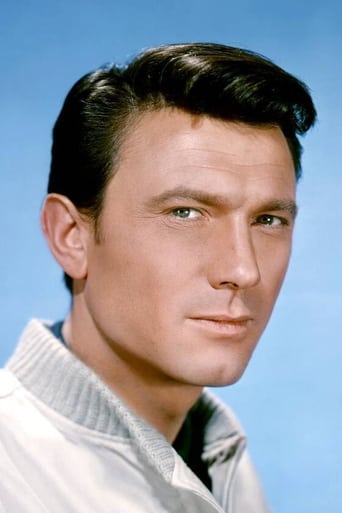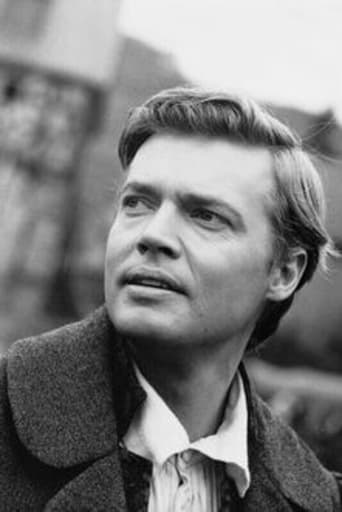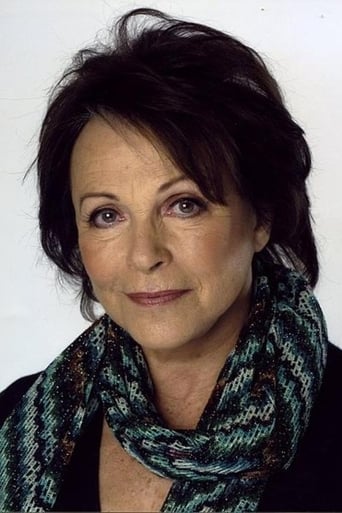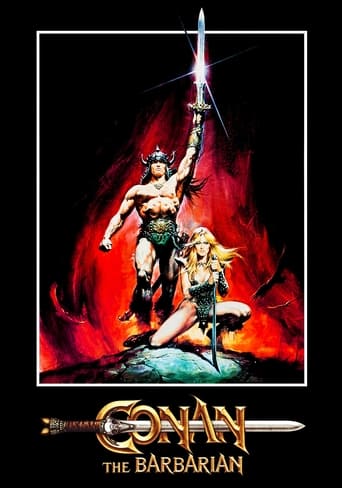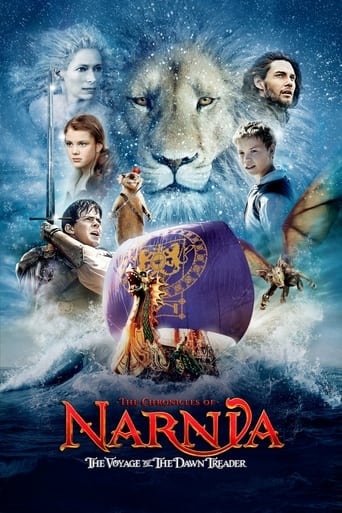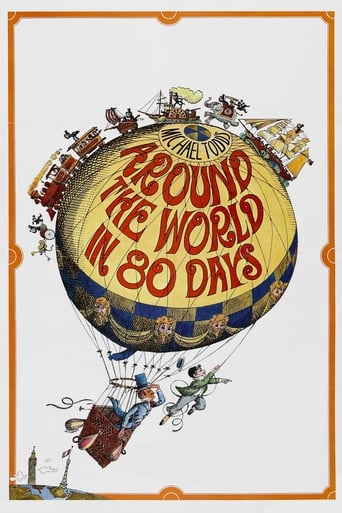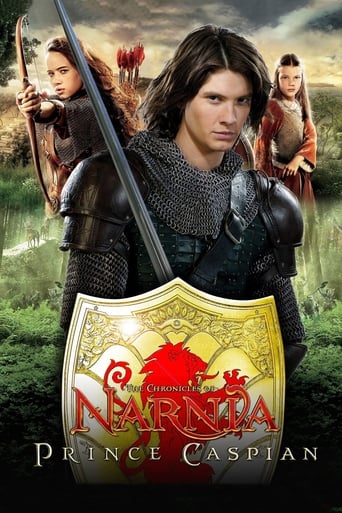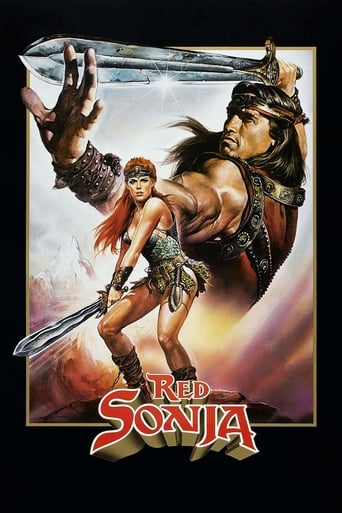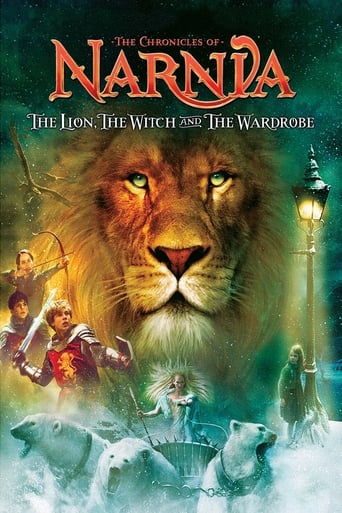
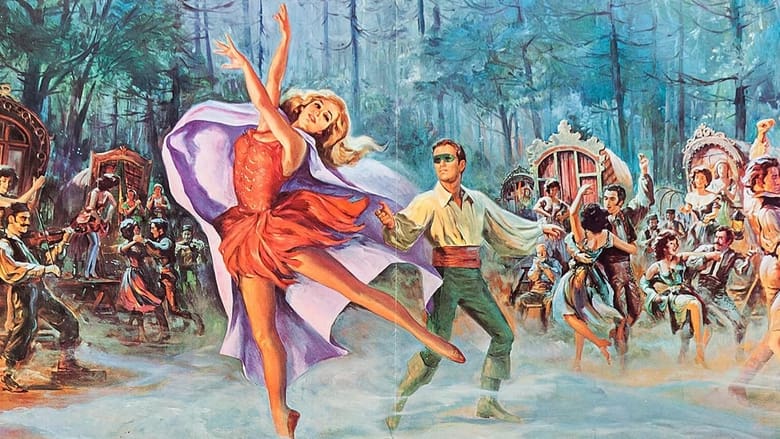
The Wonderful World of the Brothers Grimm (1962)
The Grimm brothers Wilhelm and Jacob, known for their literary works in the nineteenth century, have their lives dramatized. Wilhelm fights to write something entertaining amongst the sea of dry, non-fiction books they write and he sets about collecting oral-tradition fairy tales to put into print. Their life story is countered with reenactments of three of their stories including "The Dancing Princess," "The Cobbler and the Elves" and "The Singing Bone."
Watch Trailer
Cast
Similar titles
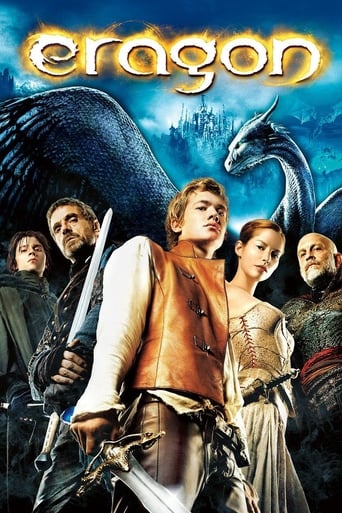
Reviews
Highly Overrated But Still Good
Better Late Then Never
Absolutely the worst movie.
what a terribly boring film. I'm sorry but this is absolutely not deserving of best picture and will be forgotten quickly. Entertaining and engaging cinema? No. Nothing performances with flat faces and mistaking silence for subtlety.
The Wonderful World of the Brothers Grimm (1962) was the seventh of the eight films made in the Cinerama process and the first to be released since the last of the travelogues in 1958, a gap of four years.The travelogue motif had been used up: there were no more places in the world to visit worthy of a two hour running time. So MGM took a chance and set up the process for two all-star, narrative films, one released in 1962 (Grimm), the other (How The West Was Won) the following year in 1963.As back-up MGM filmed Mutiny On The Bounty in a competitive process, Ultra Panavision 70, a single strip process that was comparable in height and width to Cinerama, but lacking the overlapping seam problems and curved screen effects of the latter. Mutiny was released in 1962, the same year as Grimm. Eventually, MGM and the industry went with the Panavision process due to a number of advantages. It was less bulky, way less costly, theaters could more easily adapt to a single projector replacement than an elaborate three projector system that also required a specific curved screen to be installed. Most importantly close-ups and medium shots could return to the screen and actors could communicate facially with each other again (the Cinerama curved screen required actors to look up and to one side of the camera to be seen in the theater as looking at the audience and/or fellow actors).Grimm is a minor film, endearing and charming, but of no great importance. The performances all seem either wooden or theatrically exaggerated. One exception is Laurence Harvey, giving one of his most sympathetic and warmest interpretations as Wilhelm Grimm. He also gives a wonderful character performance as The Cobbler in The Cobbler and the Elves sequence. Special note is to be taken of Jim Backus, hilarious as the King in The Dancing Princess episode; Terry-Thomas, equally amusing as the evil knight in The Singing Bone episode, and the charming dancing of Russ Tamblyn and Yvette Mimieux in The Dancing Princess.The score is charming with a jaunty main theme and a catchy up beat number, Ah Oom!, for the elves to sing while making shoes.While the invisibility special effects (The Dancing Princess) are expertly done, the George Pal Puppetoon stop action effects for the elves in The Cobbler and the Elves and the dragon in The Singing Bone are dreadfully out of date and amateurish. Once we had digital visual effects in Jurassic Park, all the old stop action dinosaur films were antiquated, and such is the effect here. As such, these sequences will seem uninteresting to modern children after the age of seven or eight, thus limiting the appeal to a modern audience.There is only one thrill sequence for the Cinerama cameras, with a speeding coach towards the end of The Dancing Princess sequence. The opening scenes of Napoleonic battle seem to be an homage to Abel Gance, whose 1926 Napoleon used a three camera projection process for the final battle montage.The film has never been released on DVD in this country. As of this writing it is the only one of the Cinerama eight that has not. An old VHS manufacture was a scan and pan full screen version. Today your only chance to see this in its wide screen composition is a TCM broadcast. That print is fuzzy and the colors are washed out. This is badly in need of a digital clean up and restoration if it is to be released on DVD eventually.All in all, this is a charming film for parents with children up to the ages of eight years old. However, its lasting value is as an antique and as a Cinerama production.Although officially given a 135 minute running time, with Overture and Intermission music, the full print times out at 2 hours, 21 minutes, 25 seconds.It received four Oscar nominations: Cinematography, Art Direction, Costumes and Score, and won the Oscar for Costumes.Russ Tamblyn has the distinction of appearing in both MGM Cinerama films, the only actor in the MGM roster to have done so.
Throughout the 30s, the 40s and indeed well into the 50s, M-G-M was the principal mainstay of Saturday nights at the pictures with a ready supply of historical melodramas and spectacles, escapist musicals, friendly knockabout comedies (not too rough or downmarket) and above all high-grade soap operas that no other studio could match.By the early 1960s, M-G-M had lost a great deal of its exhibitor support. No longer was the lion an instant guarantee of entertainment quality, but even the entertainment value of such films as Night of the Quarter Moon, The King's Thief, The Rack, Gaby, I Accuse, The Living Idol, The Seventh Sin, Underwater Warrior, Count Your Blessings, The Beat Generation, Key Witness and All the Fine Young Cannibals was decidedly tatty. The studio did not help relations with its once lapdog exhibitor friends by its brief flirtation with Cinerama. Here was a three- screen, three-projectors, three 35mm films process that could only be shown in theatres expensively re-equipped. So what was the film like? Rather dull actually. All the framing story directed by Henry Levin was a real bore, save for some wonderfully picturesque scenic shots of castles in Bavaria. George Pal's fairy- tale material was certainly more lively, with the process' potential entertainingly explored in a runaway coach sequence. All the same it was hard to enjoy the film because of Cinerama's many technical shortcomings. The three screens were often imperfectly joined, the dividing seams were always visible, and the luminosity of each screen sometimes varied considerably, accentuating a flickering effect that was almost always present, though at times less noticeable than others.But the biggest drawback was that the screen was simply too big to accommodate actors. Scenery, yes, special effects, maybe; but human beings, especially grossly dull humans like Laurence Harvey and Karl Boehm and Claire Bloom — whose deadly lack of charisma seemed inordinately magnified — definitely not. The support players came out of it best, but even the best of them — with the notable exception of Russ Tamblyn — seemed dwarfed and over-awed.
Considering the lack of attention given to this film by both MGM and Cinerama, I was glad to find an Italian DVD release. Both my computer and DVD player are zone-free, so I had no reason not to buy it for living outside of Europe, the more so since until today (July 10, 2015) there has been no release of a restored version. To my surprise the Italian release had an acceptable image quality. One has to admit though, that beyond the complaint for the division lines of the Cinerama projection, the full experience of inventor Fred Waller's system (opposed to Abel Gance's Polyvision) could only be achieved in a cinema with curved screen. On a flat screen, no matter if the motion picture has been "smileboxed" or not, the image is always slightly distorted. So if you had never seen it, be warned of the distortion, the lines dividing the three panels and the lack of restoration. For me, it was as good as in 1962 and I enjoyed it again very much. I did not know there are many persons who think this is a better film than "How the West Was Won", it is probably right: there is no propaganda here, no patriotic hymns and the script is tighter: instead of the story of three generations in "HTWWW" (Karl Malden's, Debbie Reynolds' and George Peppard's), in "TWWOTBG" you only have the story of the two Grimm brothers with three of their fairy tales inserted along the biography. If you expect CGIs instead of George Pal's animation, see another movie, and if not, enjoy his puppets and dragon. The cast, on the other hand, includes various cult players, as Beulah Bondi, Terry-Thomas, Martita Hunt, Ian Wolfe and Oscar Homolka; popular comedians as Jim Backus, Buddy Hackett and Arnold Stang; young stars of the 60s as Yvette Mimieux, Robert Crawford Jr. and Russ Tamblyn, and good lead players: Laurence Harvey, Karlheinz Böhm, Claire Bloom, Barbara Eden and Walter Slezak. Enjoy it again or discover it.
When I was eight years old, this film was re-released with - of all things - "How The West Was Won"! At the time HTWWW was my favorite movie but I remembered adoring "Wonderful World of The Brothers Grimm" when I saw it as a second feature. I must have had a cast iron keister, because the nearly six hour playing time of the two movies never bothered me, and I remember going to see it more than once during that release.Over the years, this film has stayed with me - especially the fairytale segments. I remembered that I adored the sets and costumes, loved the dance numbers and thought the movie was enchanting. How The West Was Won went to TV soon after this release, but "WWOTBG" never did (at least not in my area). In fact, I have often thought about this film but was never able to indulge myself in the nostalgia of reviewing it - until recently.TCM finally played it over the holidays last year and I recorded it on DVR; due to a busy life, I am only now getting down to watching it again. All I can say is my how tastes change with age! The costumes and sets are still lovely and the music score is pretty good. I was especially moved this time by the Christmas song in the "Cobbler And The Elves" segment as well as the Gypsy music in the "Dancing Princess". When I saw the film in theaters it was not in Cinerama format. TCM showed it in a letterbox version, so the entire picture is represented, but the film has a distorted appearance which is sometimes difficult to watch. The movie boasts an excellent cast, but the directing is uneven, the plot is slow and the special effects are fine for the era in which this movie was made but might bore younger viewers who are used to more sophisticated technology.I started watching the film yesterday, but I'm finding it so laborious that I am having to watch it in segments; I want to finish it to see what it is about this flick that my 8-year-old self found intriguing. The fairytale segments are still fun, but the biopic portion is downright boring. Some if the historical inaccuracies are glaring - I think at one point our heroes take a steam boat to visit a church in another city but steam boats weren't around during the Napoleonic era. Neuschwanstein Castle was built in the 1870's. The romance between Barbara Eden and Wilhelm Grimm is downright cringe-worthy.I am sure if I could see this in a theater and in Cinerama, my opinion might be altered, but on a TV screen this film can't hold my interest. This makes me sad because I have fond memories of this film but for me it does not stand the test of time. Kids may like it but it might be a bit long and slow for today's youngsters who are used to lots of flash, explosions and action.
